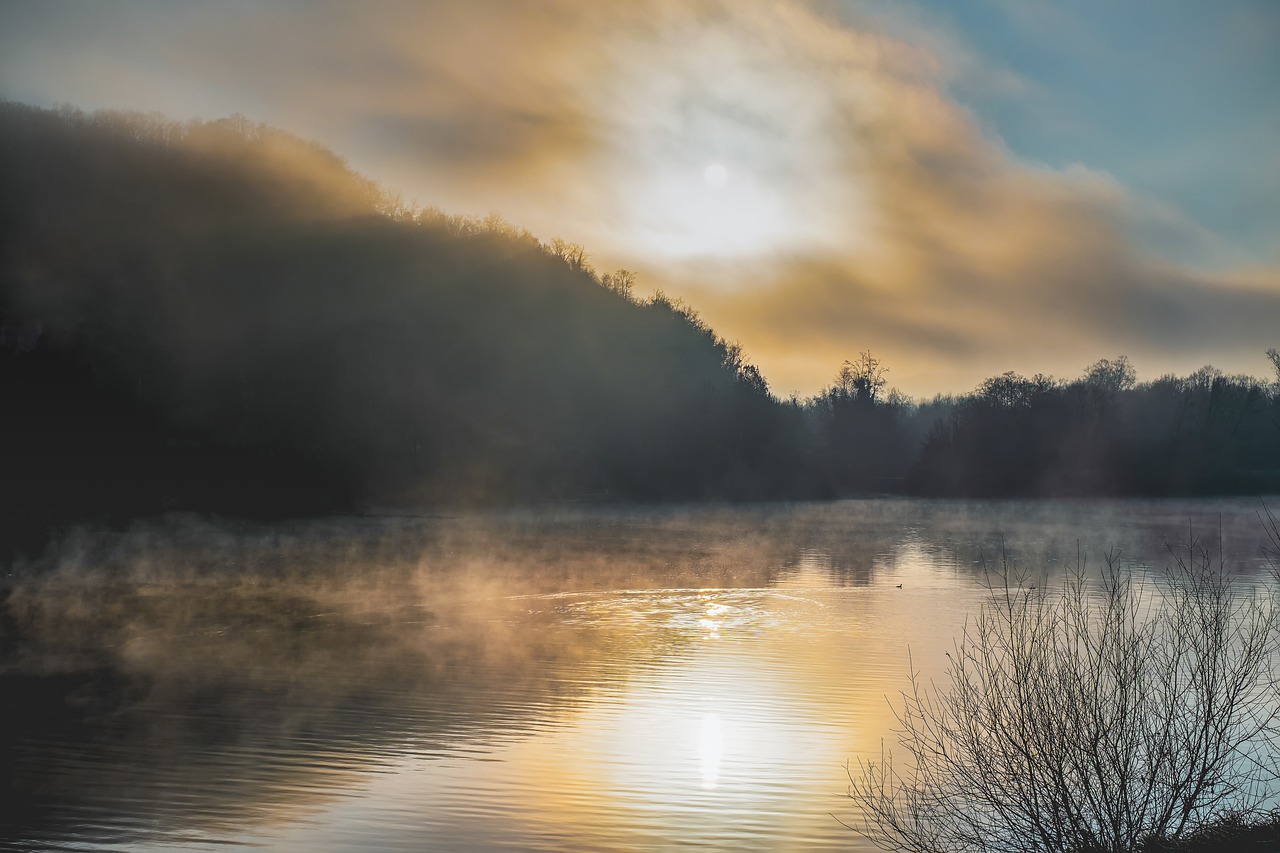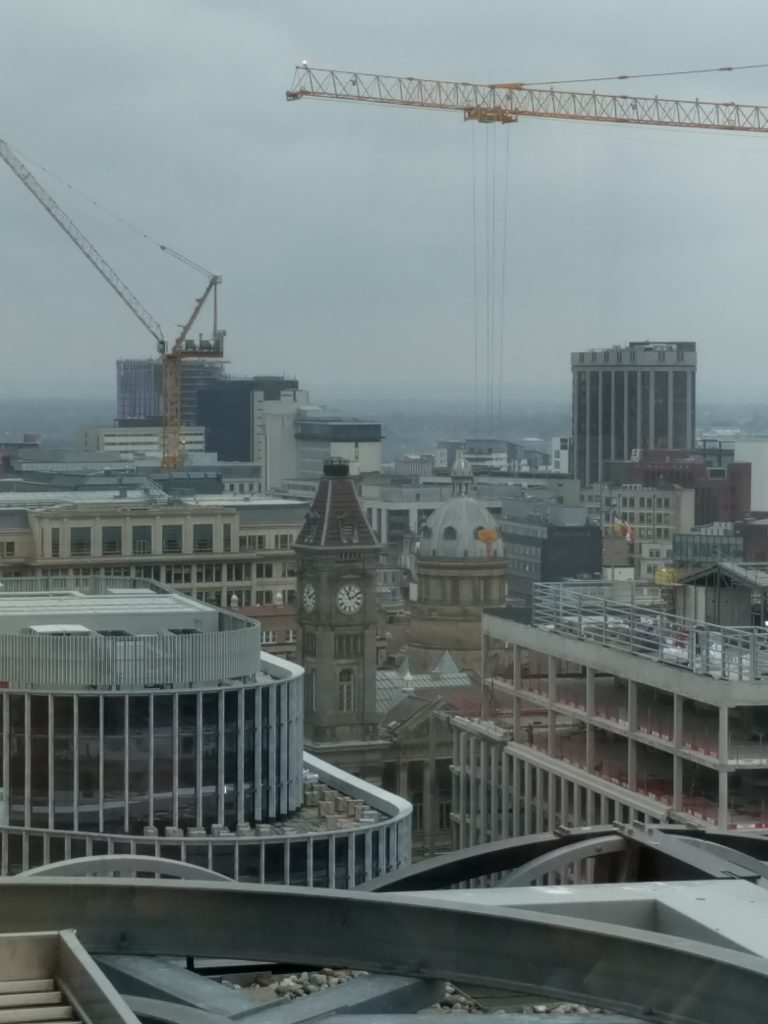
A couple of weeks ago, the husband and I went to Birmingham for a bit of a break.
What’s special about Birmingham, I hear you ask? Let me tell you. Having lived there in the past (over twenty years ago now) I know the centre fairly well — most of it, anyway — a lot has changed since I moved away. One of the things that has changed is the Library of Birmingham. It is now housed in a completely new building, a short distance from the one I knew when I lived and studied there.
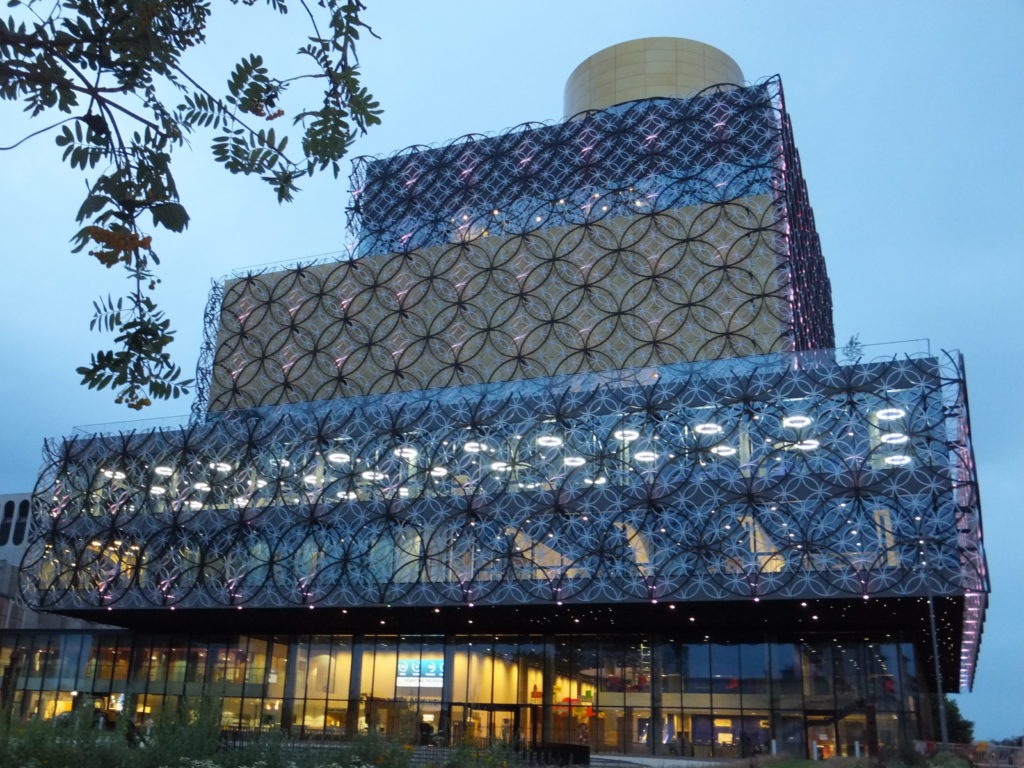
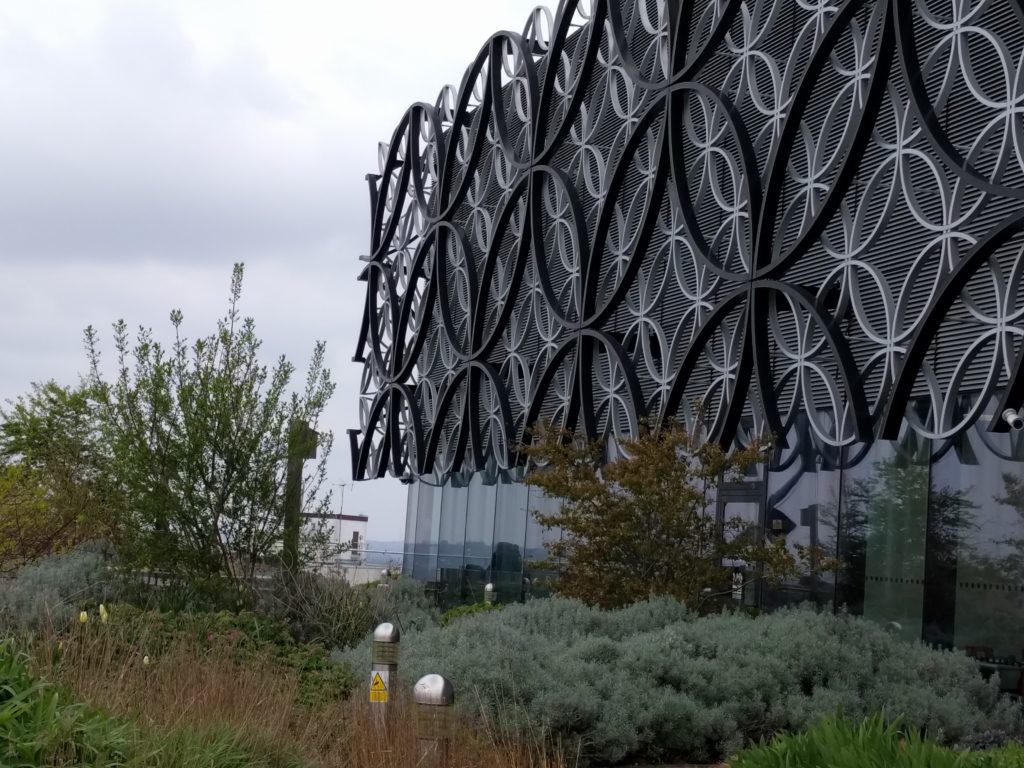
Officially opened on 3rd September 2013 by Malala Yousafzai, the Library of Birmingham cannot be ignored. A standout facade that hits you in the face and tells you that this building is something out of the ordinary. It certainly doesn’t feel in any way inferior to the slick, corporate buildings nearby. Designed by a Netherlands based architectural team, the Library with its amazing offset blocks, covered in aluminium circles, and the roof topped off with another circle, draws you in.
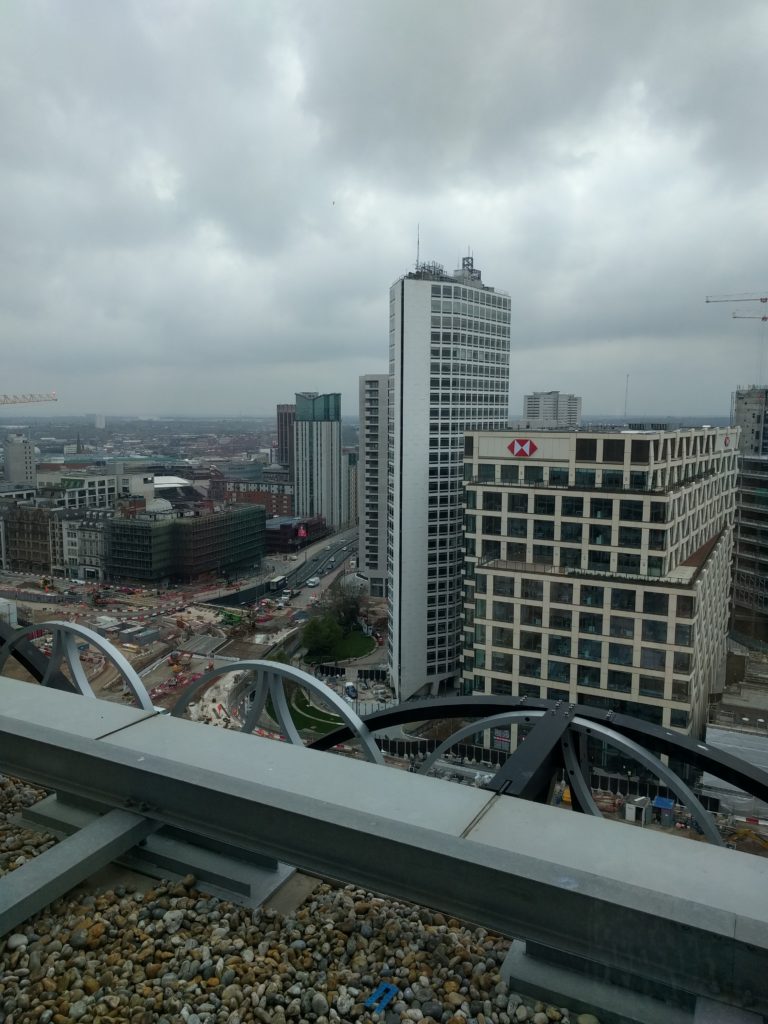
Going through the doors, we decided to head for the top and work our way down. We took the escalators as far as we could (they don’t go all the way to the top), eschewed the lifts, and climbed the remaining ninety (I think) stairs to the roof terrace. The views from here are amazing — even on the cloudy day of our visit we could see over the whole city and the distant hills beyond.
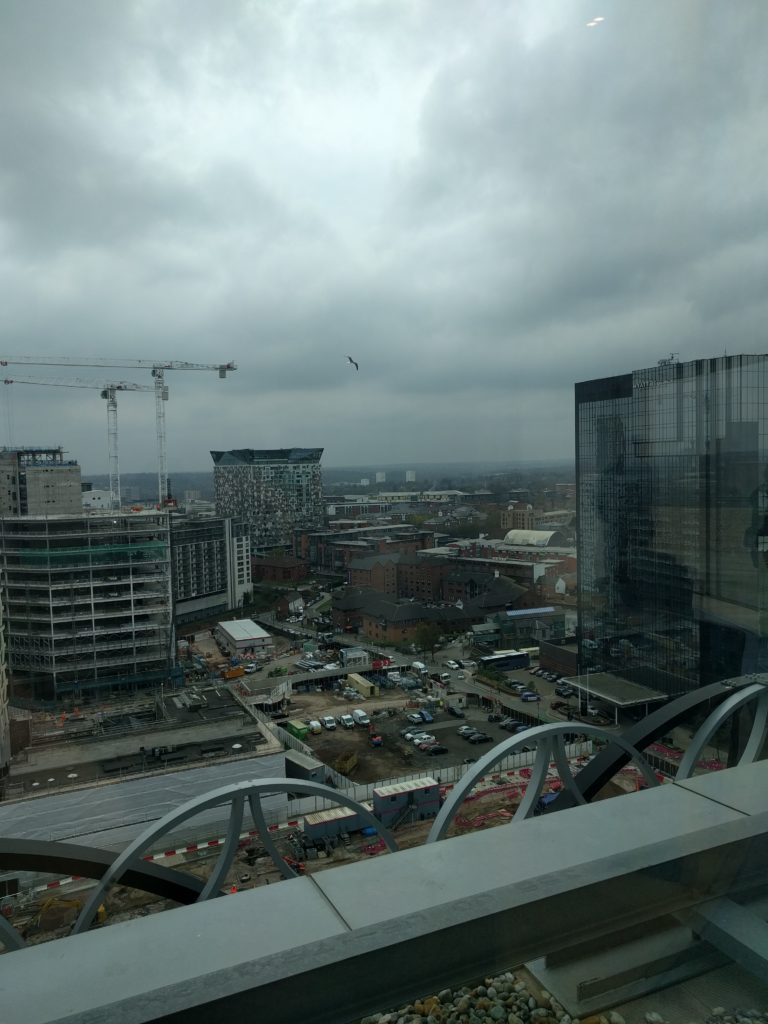
Also on this level is the wonderful Shakespeare Memorial Room — this is housed in the circular structure that one can see on the roof. Designed originally in 1882 by John Henry Chamberlain for the first Central Library, it was moved in 1974 to the new library (the one I used to use). When this library too became obsolete, the room was again dismantled, to be later relocated in pride of place, here in the Library’s latest incarnation.

The Library is home to Britain’s most important Shakespeare collection of some 43,000 books, including a very rare First Folio. But don’t be fooled by the impressive glass-fronted bookcases in the Memorial Room, all the really rare and important stuff is kept safely elsewhere in the building.
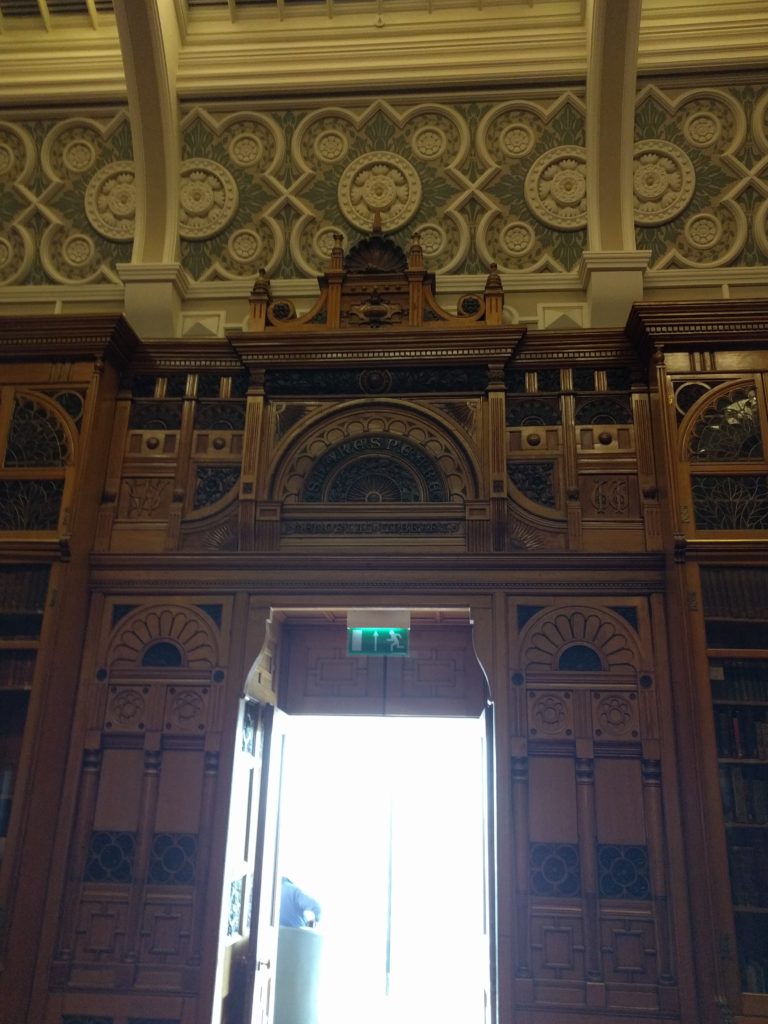
Nevertheless, this is a truly stunning room, with its ornate plasterwork, wooden panelling, and stained-glass overhead windows. When I entered, it was as if I’d stepped from the 21st century into the Victorian age.
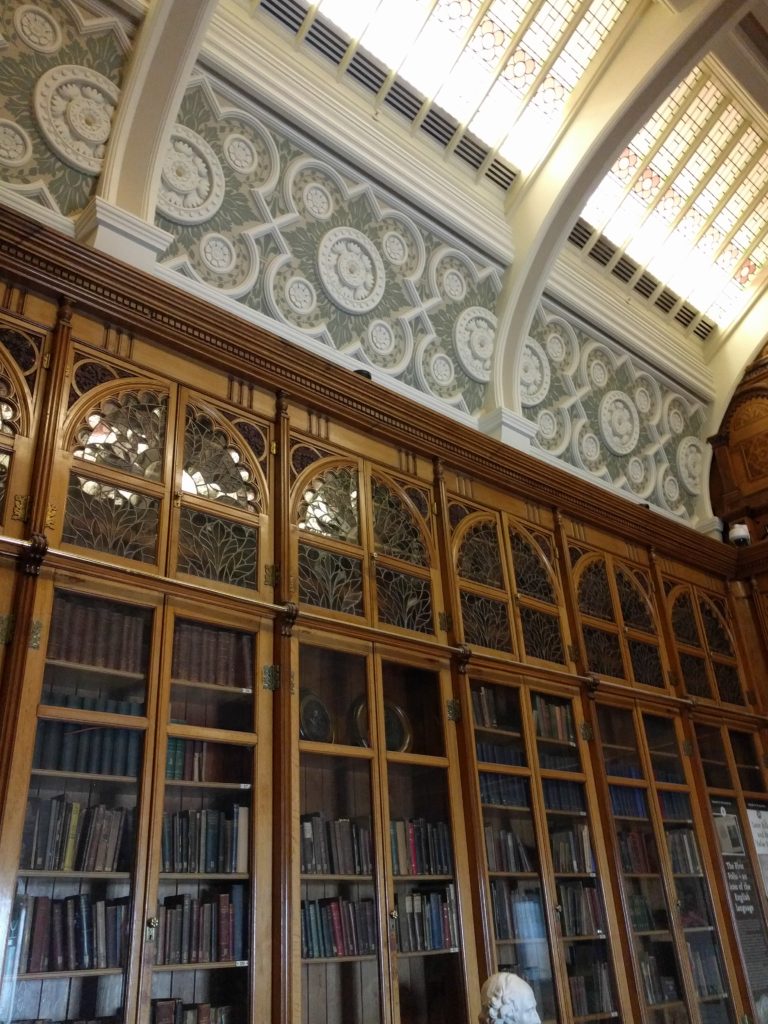
Going down a couple of floors, we discovered the Library’s ‘secret’ garden. I imagine this is a great space in summer to take a break from poring over one’s books. Lots of greenery and again, amazing views over the city.
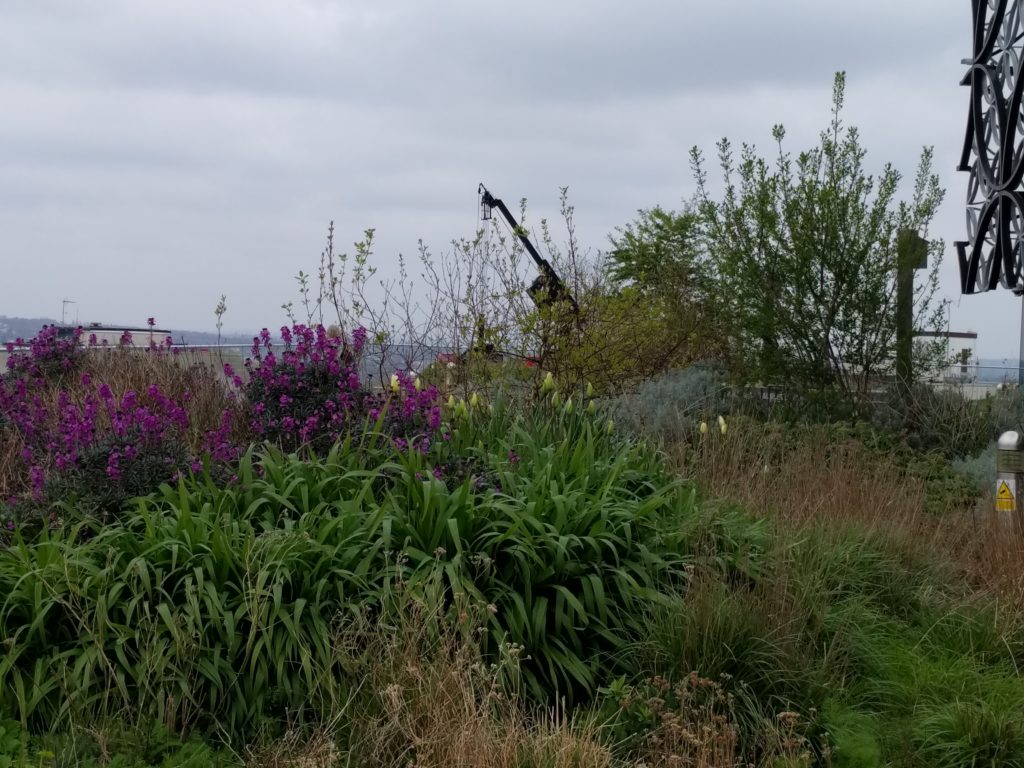
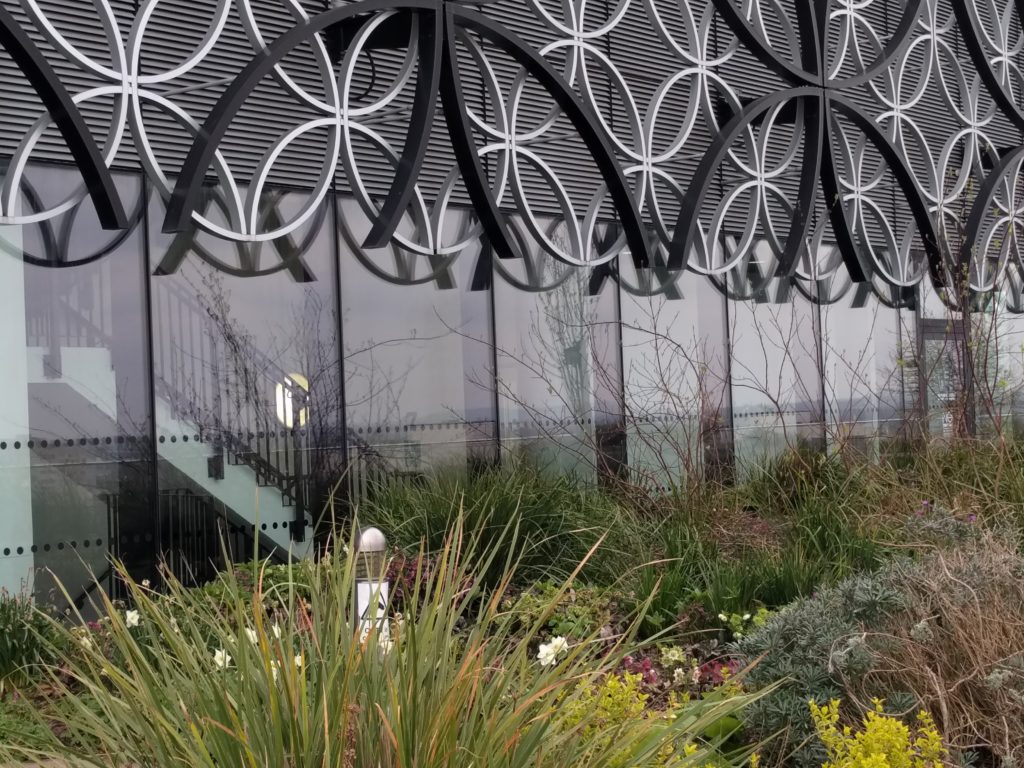
Our whistle-stop visit here over, we went out to find some lunch before heading for our next stop — the Coffin Works. Now, this wasn’t as grim or macabre as it sounds. The Coffin Works , based near the Jewellery Quarter (another favourite haunt of mine), is the name given to what was the Newman Brothers brass founders. Established in 1882, they specialised in cabinet furniture, focussing on the fittings and fixtures for coffins.
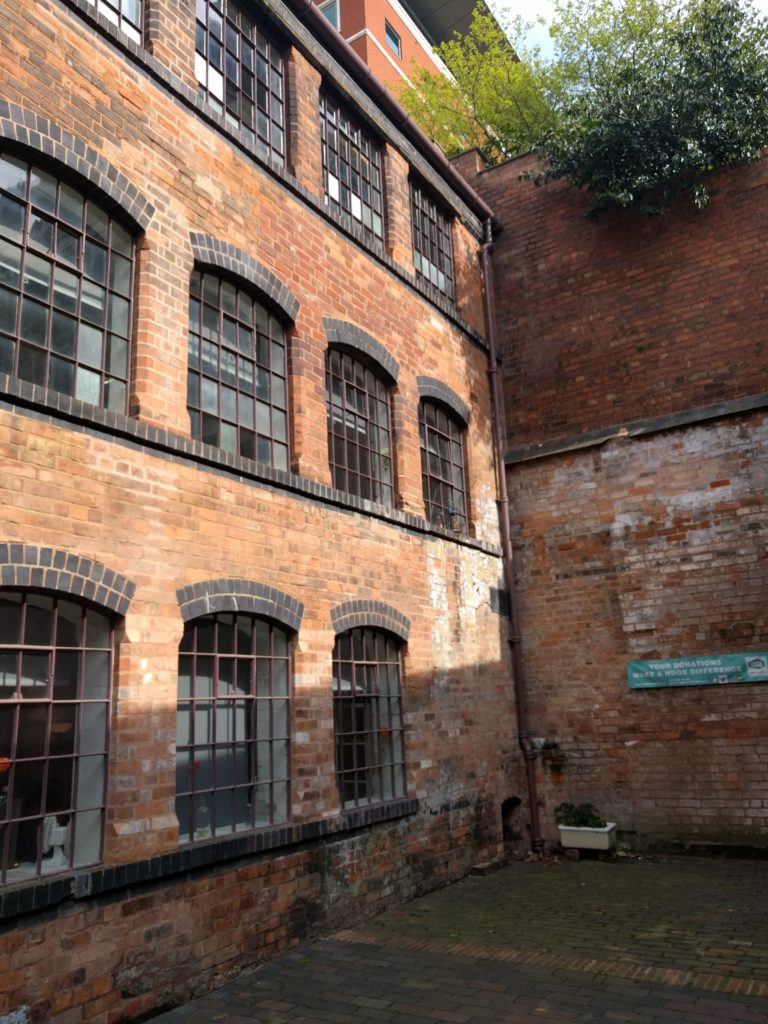
They were for the most part a successful business, but failure to modernise, and increased competition, forced them to cease trading in 1998. But that wasn’t the end of the story. Joyce Green, a lady who’d started her career there in 1949 as a secretary and worked her way up to become company secretary, then sole owner by 1998, had other ideas. She wanted to save the building and preserve this slice of industrial history, by turning it into a tourist attraction. She worked tirelessly to achieve this, and although she died in 2009, her vision was finally realised when the Coffin Works as it is today, opened in October 2014.
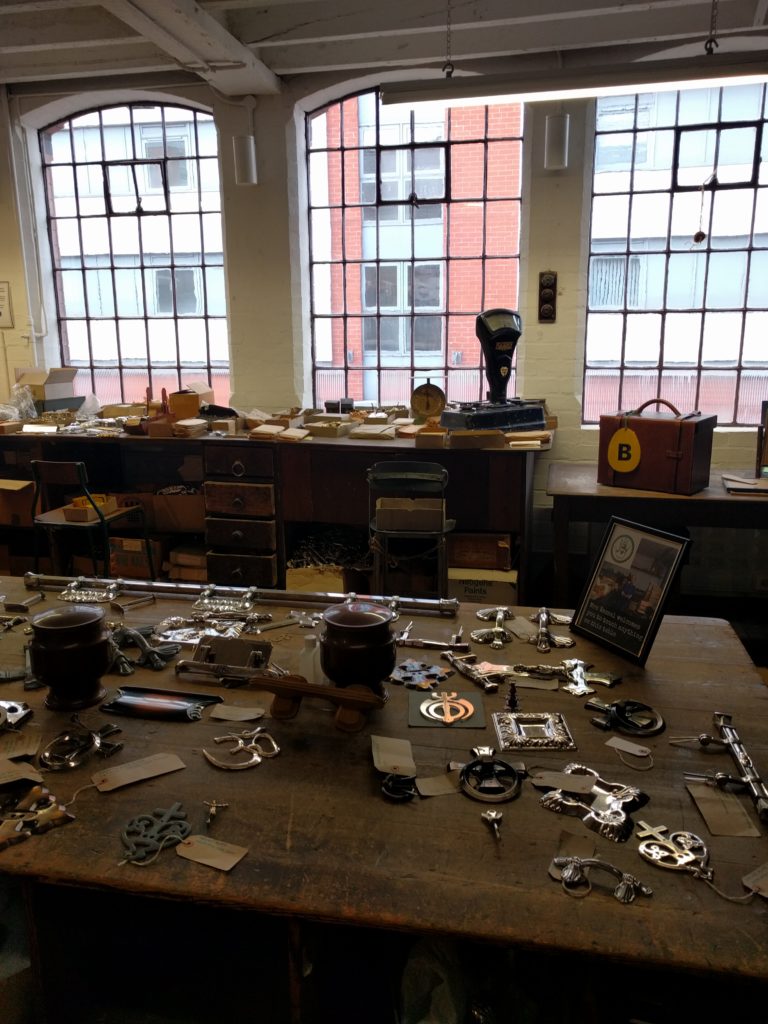
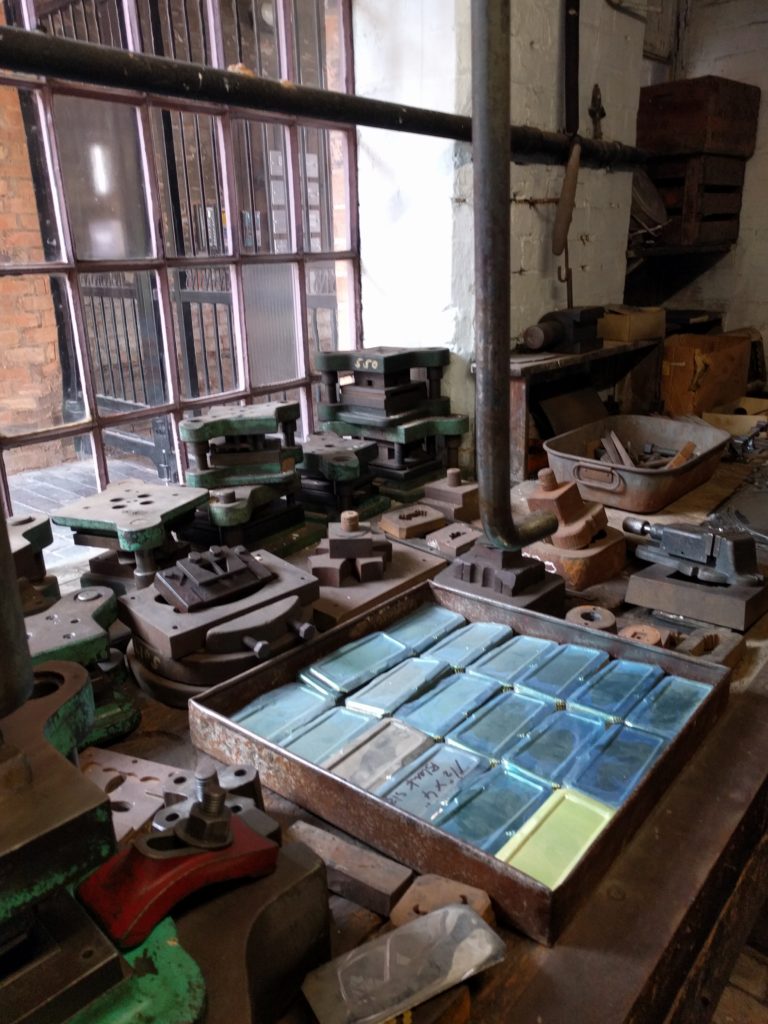
This is a building that seems preserved in aspic; it appears to have been left exactly as it was on the day the last workers clocked off. Our knowledgeable volunteer guide first took us to a floor where samples of coffin fittings were strewn across the large central table for us to inspect. The original work benches still sat under the windows to obtain the best light, and stacked shelves full of boxes of screws, fittings, handles, etc, lined the walls.
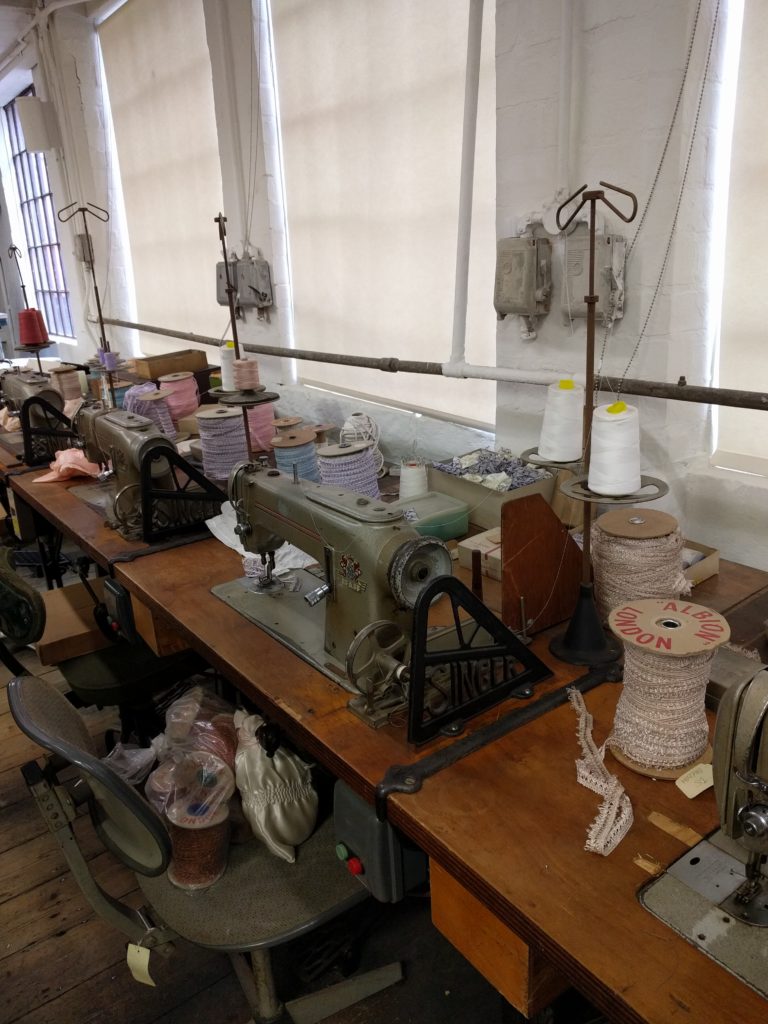
On the next floor up, we saw the room where seamstresses made the shrouds — the sewing machines were still threaded and colourful bolts of fabric were piled high. I was surprised to learn that shrouds were not always white.
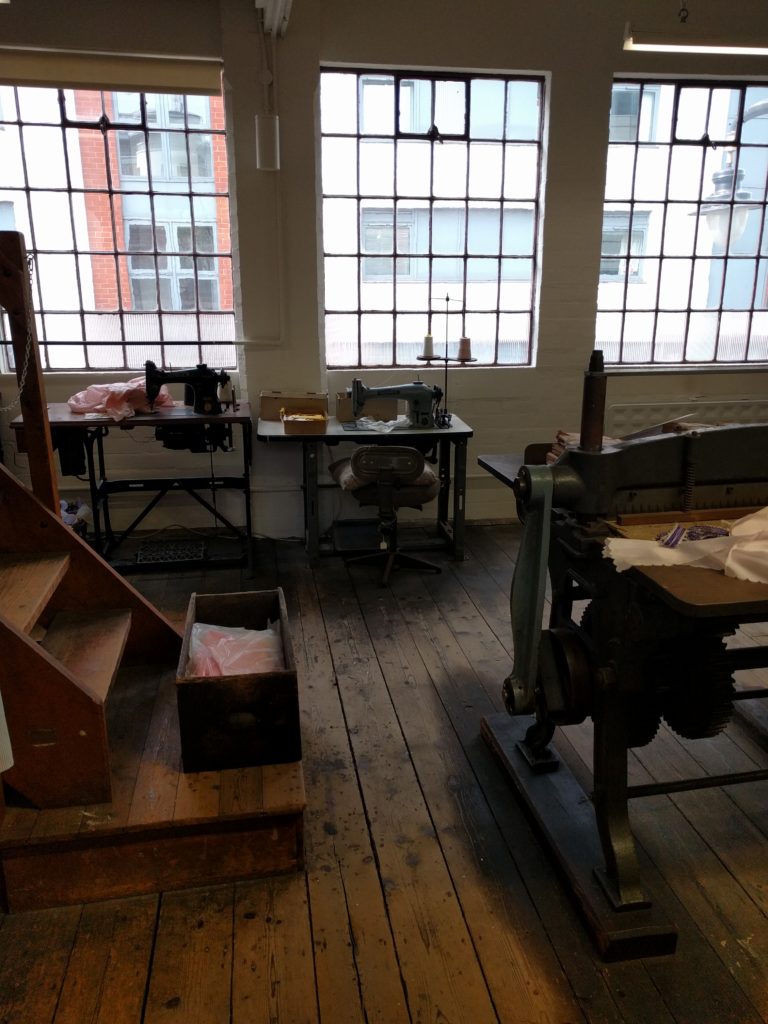
We visited the office where all the admin took place, with its old-fashioned telephone and typewriter. In a cupboard, glasses and a few remaining bottles of ale from a long-ago staff party stood forlorn and forgotten. It really did feel as if the people who worked here could come back at any moment. In the yard on the ground floor we were shown the heavy machinery used to make pressings — husband, as an engineer was fascinated by all this.
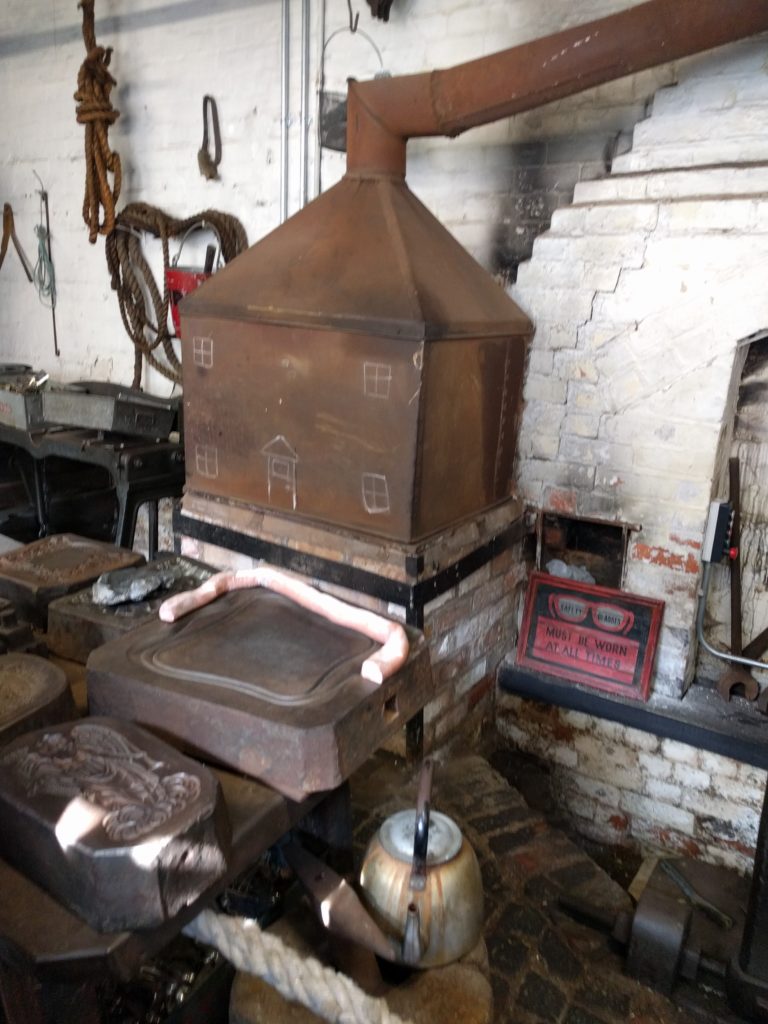
I am not really into machinery, being more interested in the people, but it did make me think about the working conditions for employees of the past, and a past that wasn’t really that long ago. If you think you would enjoy learning a little about Britain’s industrial heritage, all enlivened by tales of some of the quirky characters who worked there, I would recommend a visit to the Coffin Works.
Well, that was our last stop on our brief trip to Birmingham. It was good to go back and discover that the city we left behind is still as vibrant as ever, and I wouldn’t hesitate to return for another short break. I hope I’ve given you some ideas of places to visit, and if you know of any other interesting places to see there, do let me know.
All photos my own, apart from the view of the Library of Birmingham at dusk, taken from Wikimedia (click link under photo for details)

